In the world of electronics, names like resistors, capacitors, and transistors sound cold and seemingly mere functional symbols. But when we cut them open with cameras and cutting tools, we discover astonishing structures and beauty hidden within.
“Open Circuits” is a fascinating book that uses cross-sectional photography to reveal the intricate world inside electronic components. Today, we’ve selected 10 of the most iconic components to offer a glimpse into the inner beauty of electronics.
Selected 10 component internal sections
1. Resistor
The internal carbon film is wound on the ceramic substrate, the black resistor film is carefully wrapped, and the silver end caps are connected to the pins through a metallization process, with a compact structure.
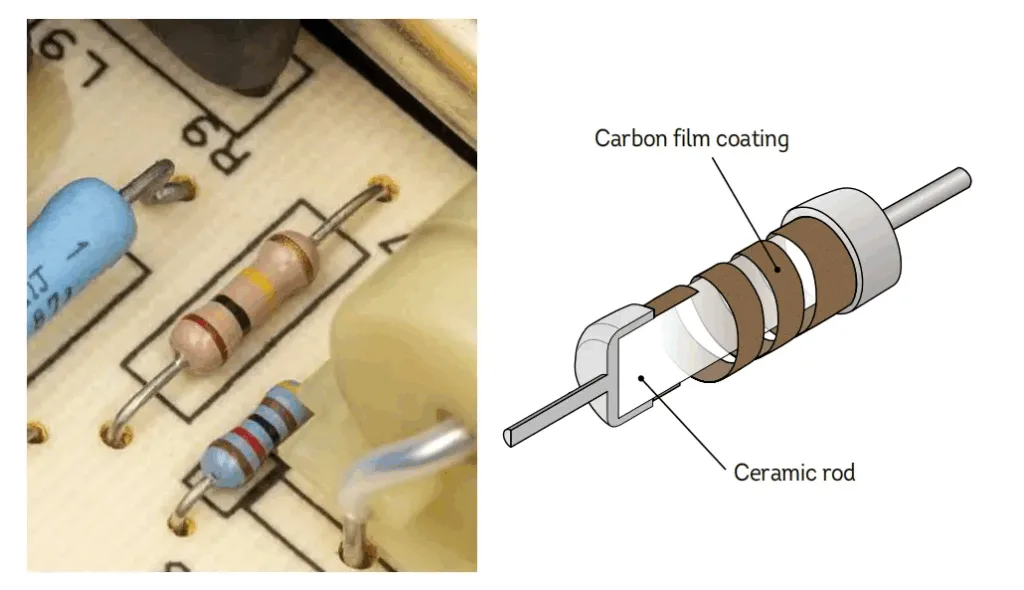

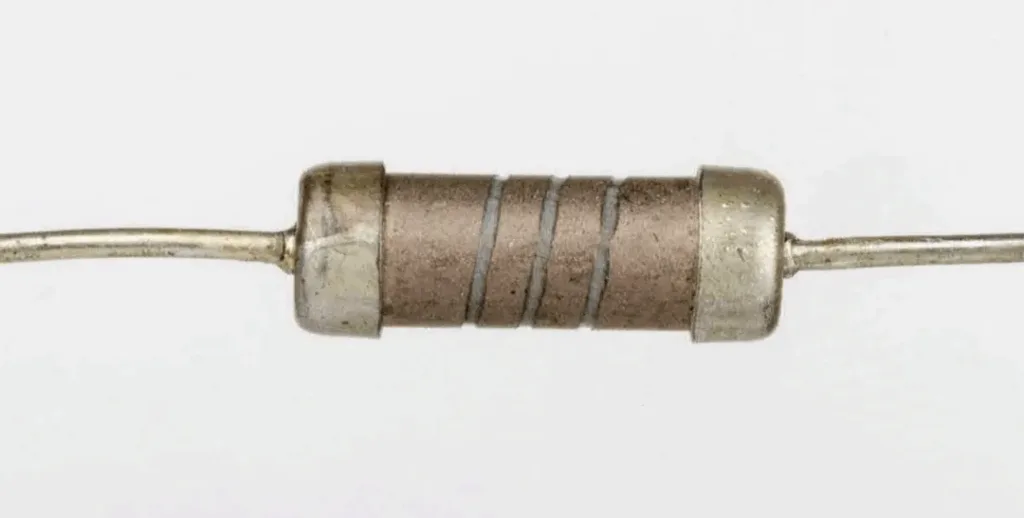
After removing the protective coating, the spiral groove is clearly visible
2. Aluminum Electrolytic Capacitor
The rolled aluminum foil and the paper soaked in electrolyte are stacked together to form a roll, like a tightly rolled book, with layers stacked on top of each other.

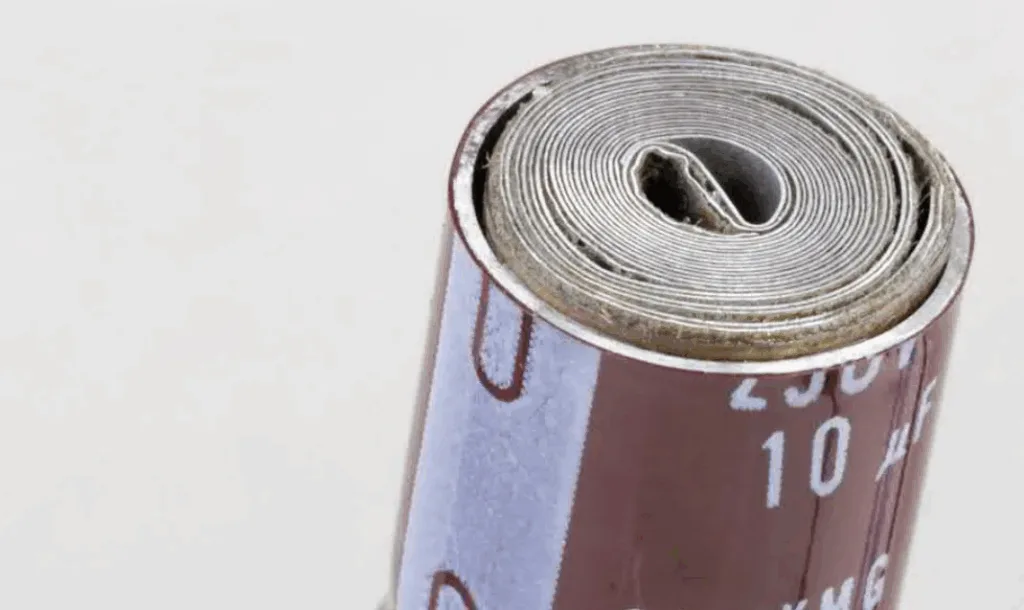
3. Ceramic Capacitor
MLCC multi-layer ceramic dielectrics and metal electrodes are stacked alternately, and the cross-section is like a thousand-layer pancake, showing the secret of high-density energy storage.

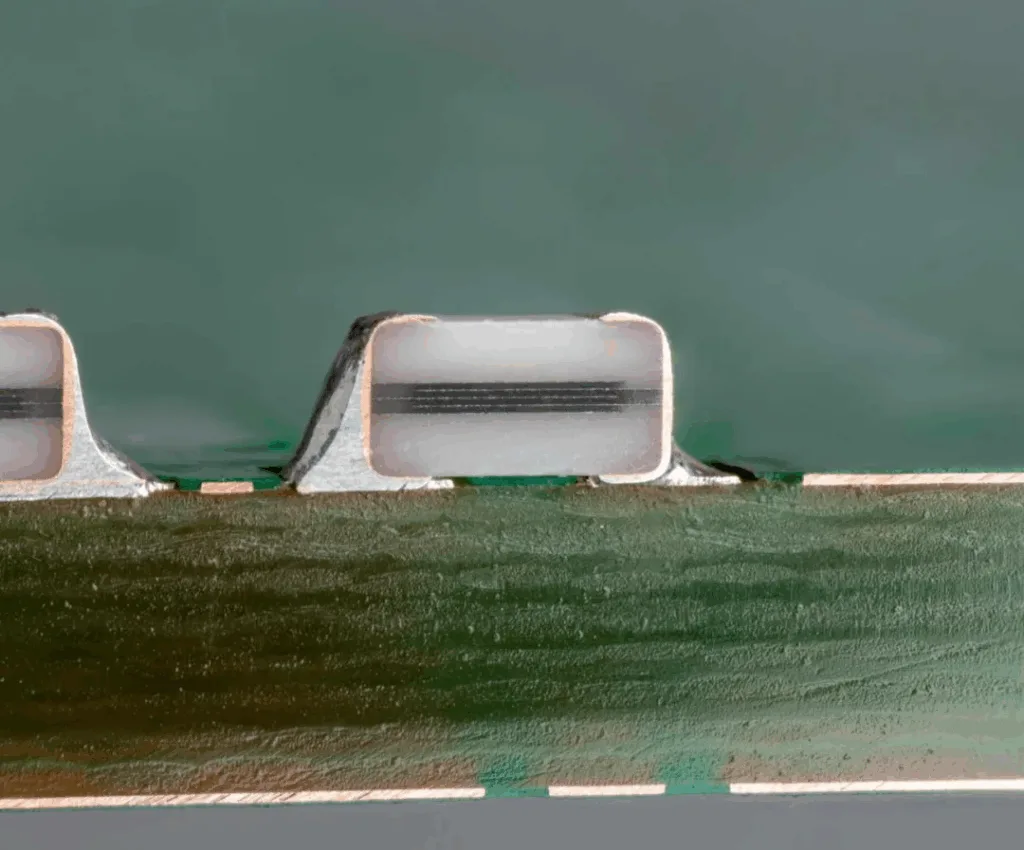
4. Surface – mount Inductor
The copper coil is tightly wound around the ferrite core. When cut open, the coil is regular and neat, like a miniature art sculpture.
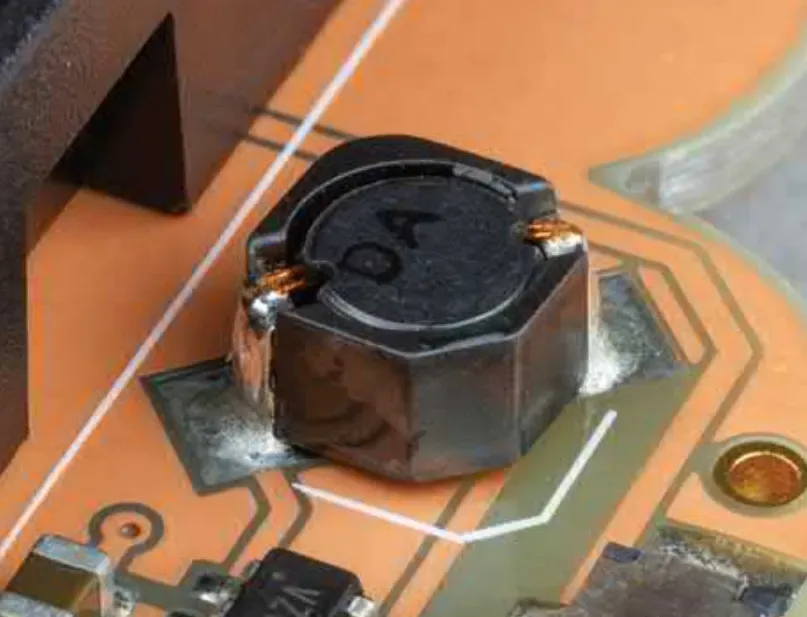
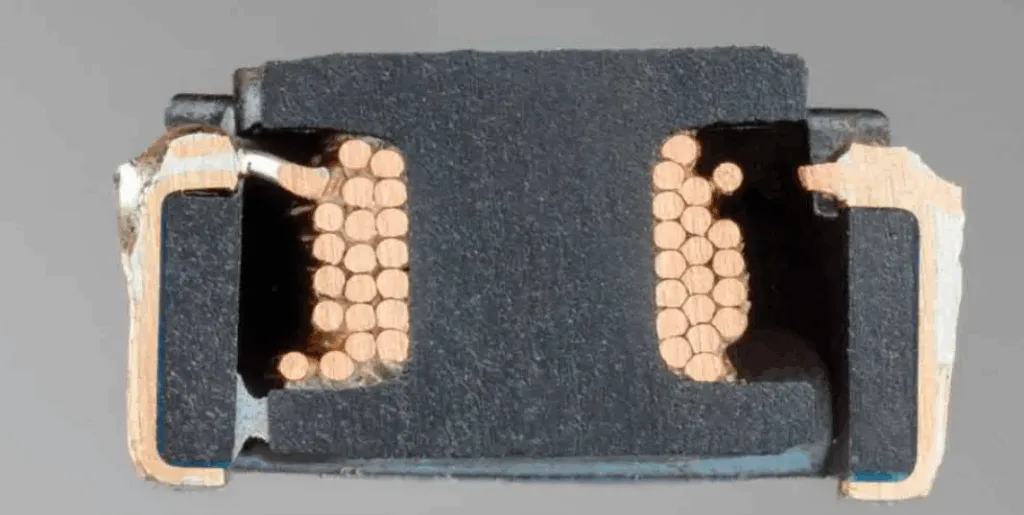
5. Transformer
Multiple strands of enameled wire are wound around an iron core, with layers of insulation separating them. The cross-section shows the path that energy is transferred between the different windings.
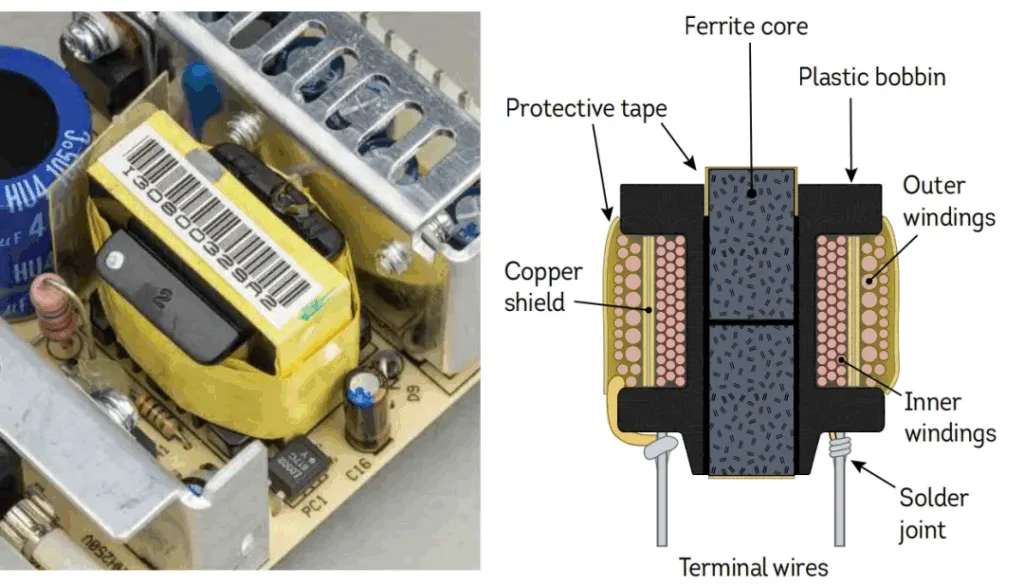
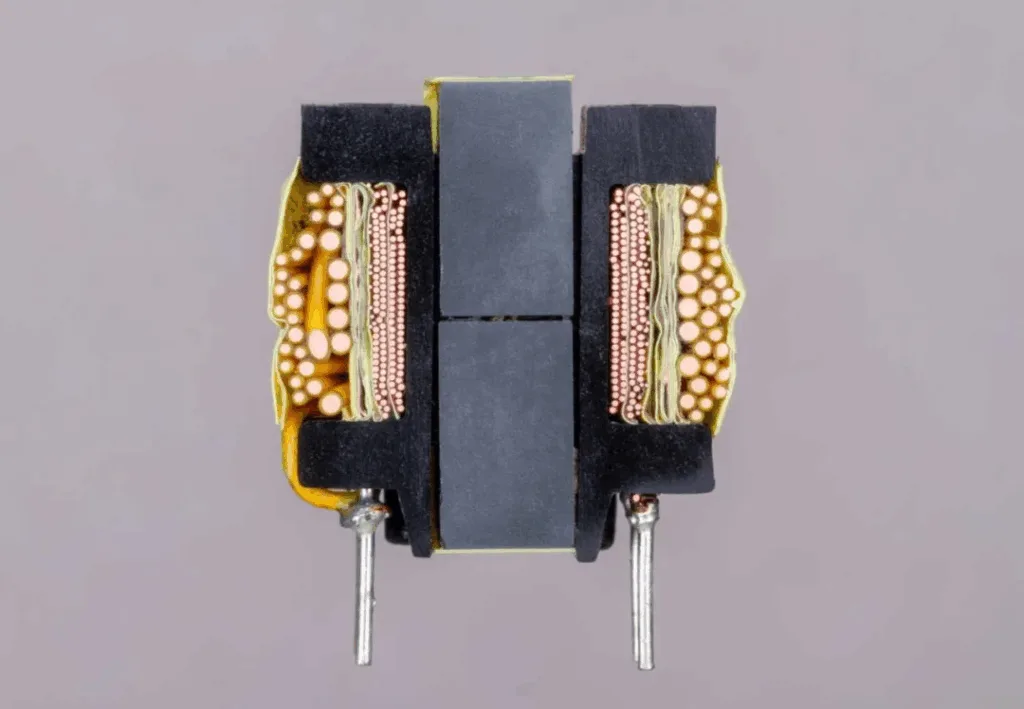
6. Diode
The diode itself is a tiny silicon “chip,” also called a “die.” This initially ultrapure silicon wafer has been modified to create distinct regions: one where electrons carry the current, and another where holes—or electrons are missing. The junction between these two regions, the active area of the device, conducts current in only one direction.
Two thick tinned copper wires are bonded to the silicon chip with solder, and then encapsulated in black epoxy plastic.
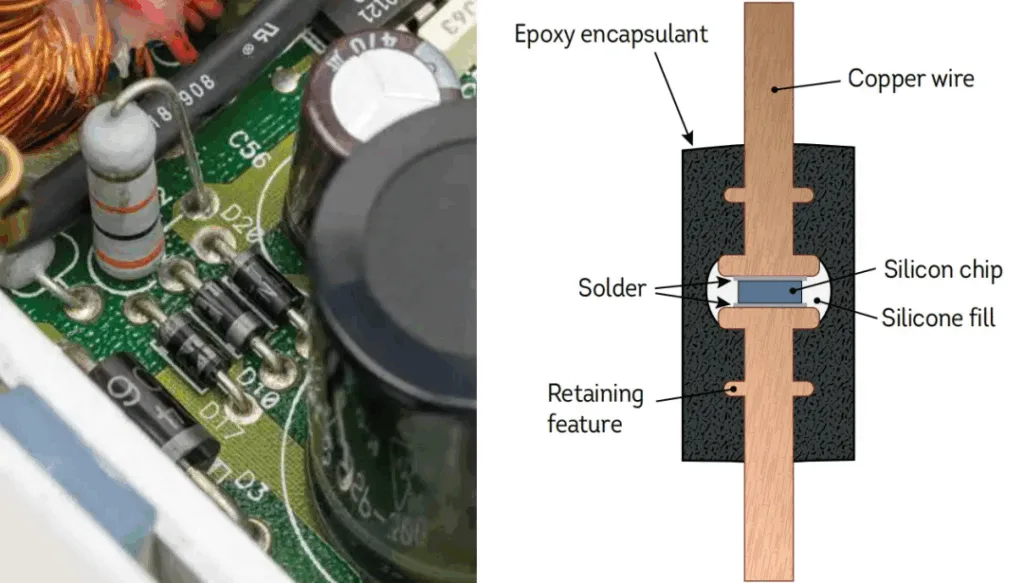
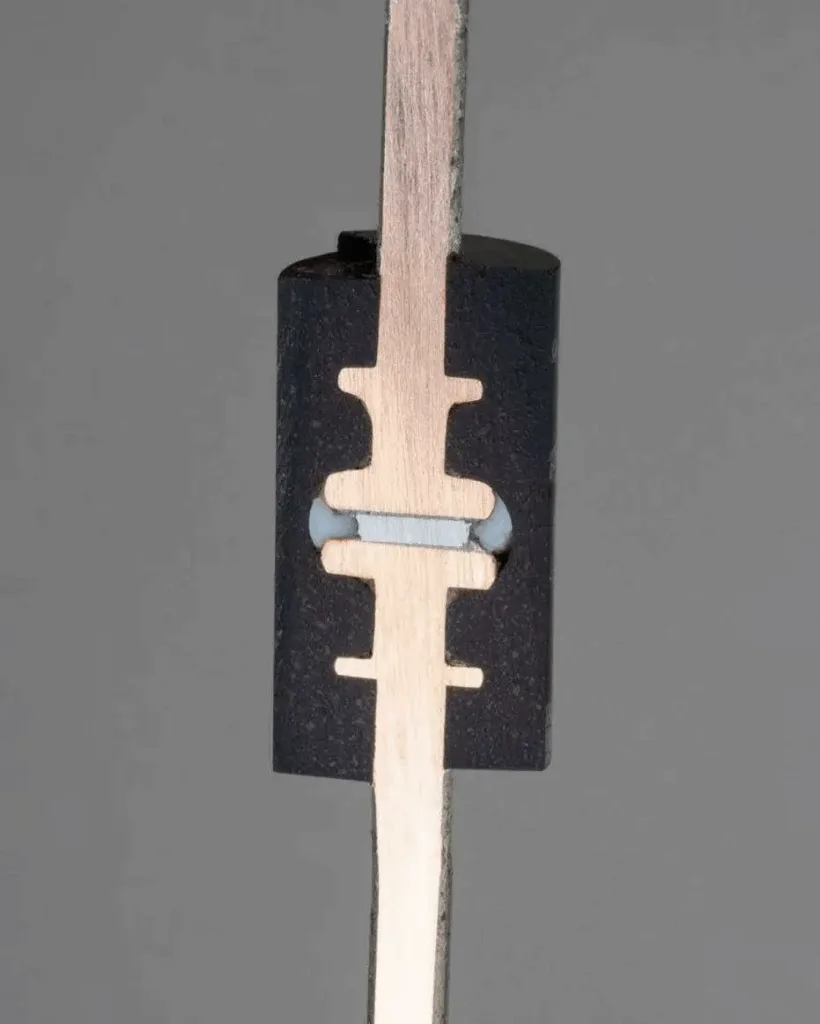
7. LED Light Emitting Diode (LED)
Light-emitting diodes (LEDs) are enduringly fascinating, seemingly simple yet brimming with ingenious design details. The semiconductor chip in an LED isn’t made of silicon, but rather a custom-made semiconductor that emits the desired color when activated. For example, AlGaAs (aluminum gallium arsenide) is commonly used to create red LEDs like this one.
Under the translucent epoxy resin lens is a tiny light-emitting chip connected to gold wires. It is tiny but can light up the world.
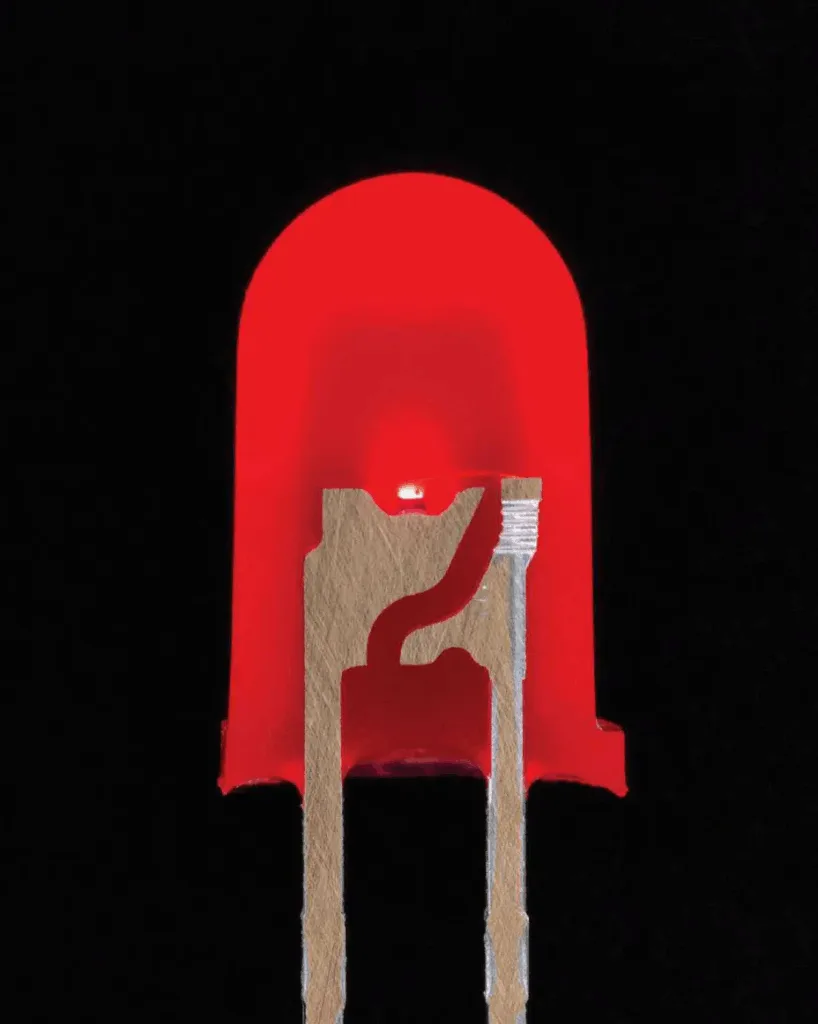
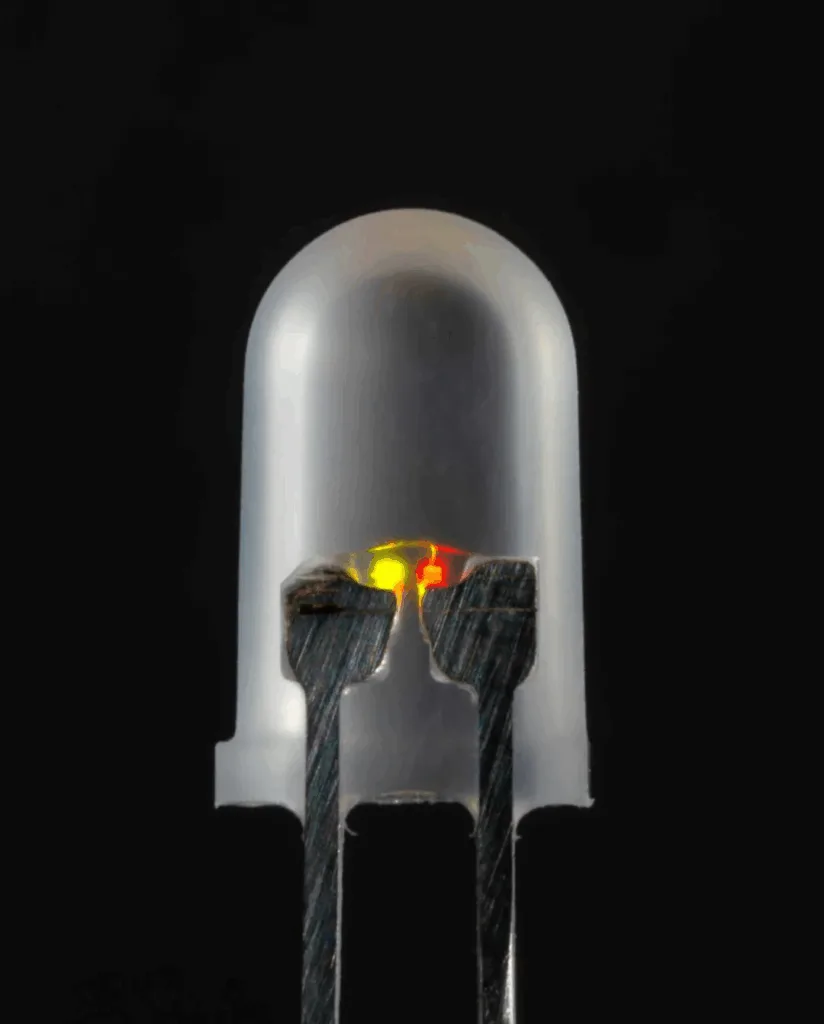
8. Transistor
The transistor, a key invention of the 20th century, is a semiconductor device that allows one electrical signal to control another. Transistors are typically used to amplify signals or act as logic switches. Metal pins connect to silicon chips through solder joints, and tiny bond wires act like blood vessels, supporting both amplification and switching functions.

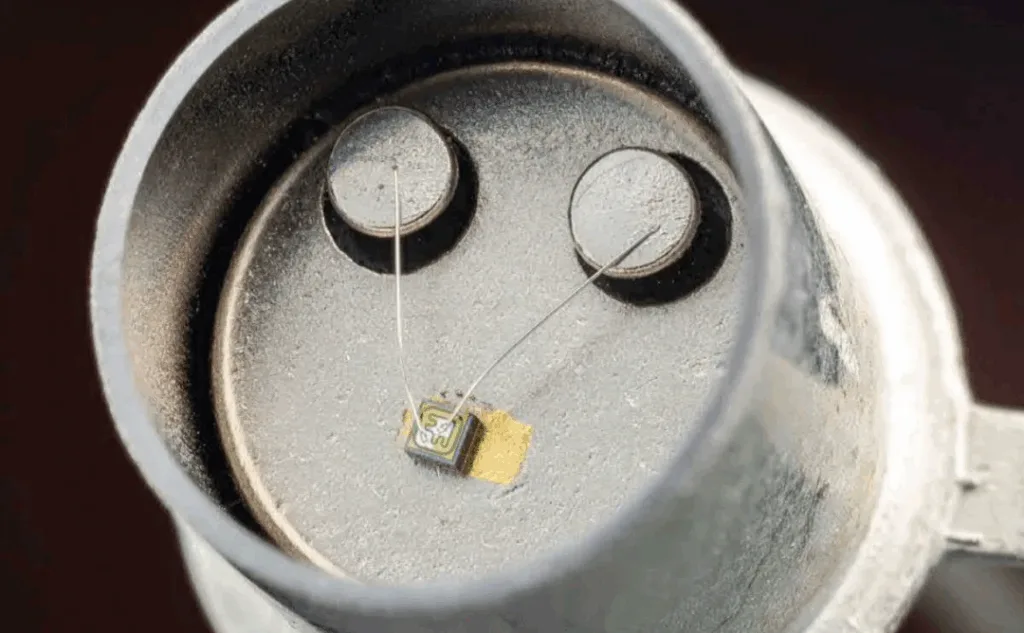
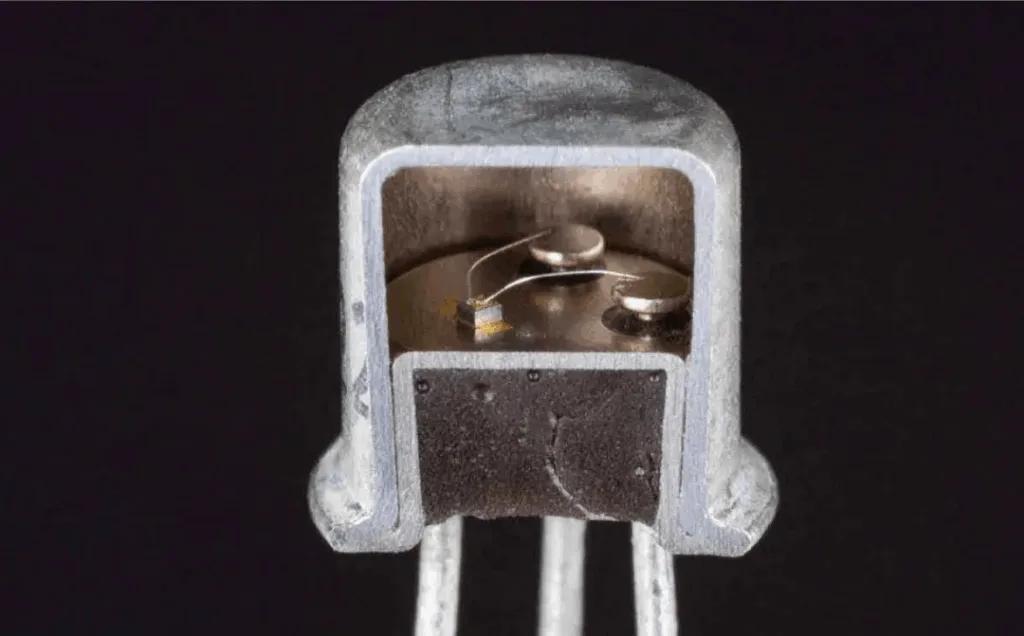
TO-18 package
In addition to the silicon die, one of the two gold bond wires connected to the top of the chip can be seen through the black epoxy package.
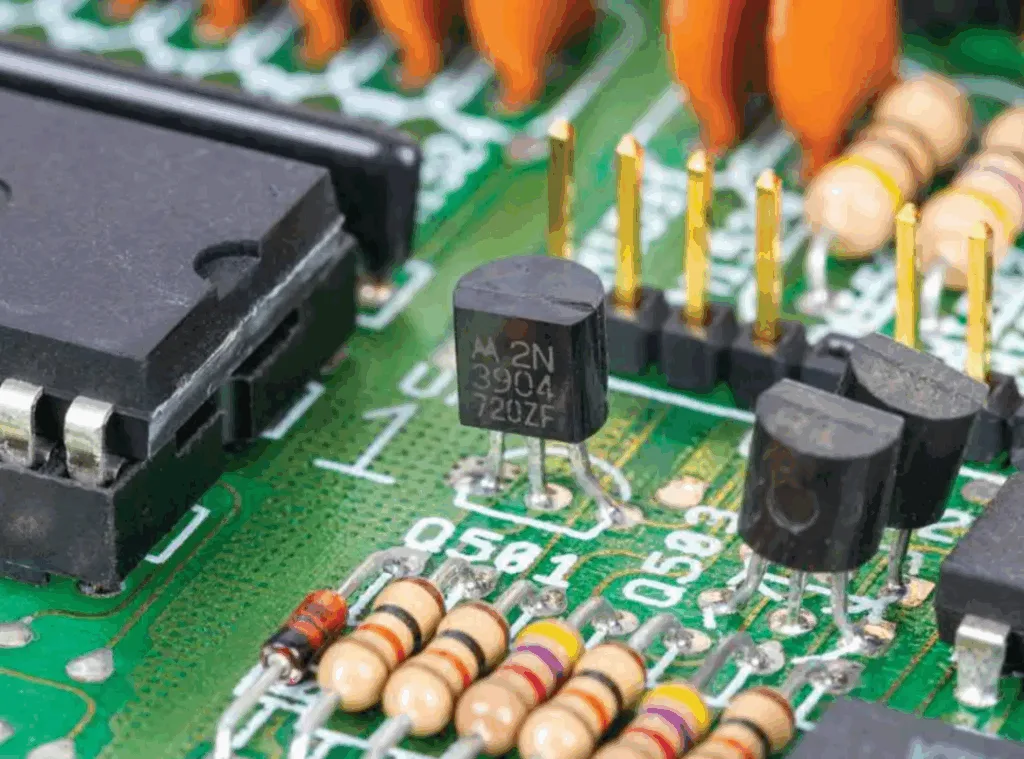
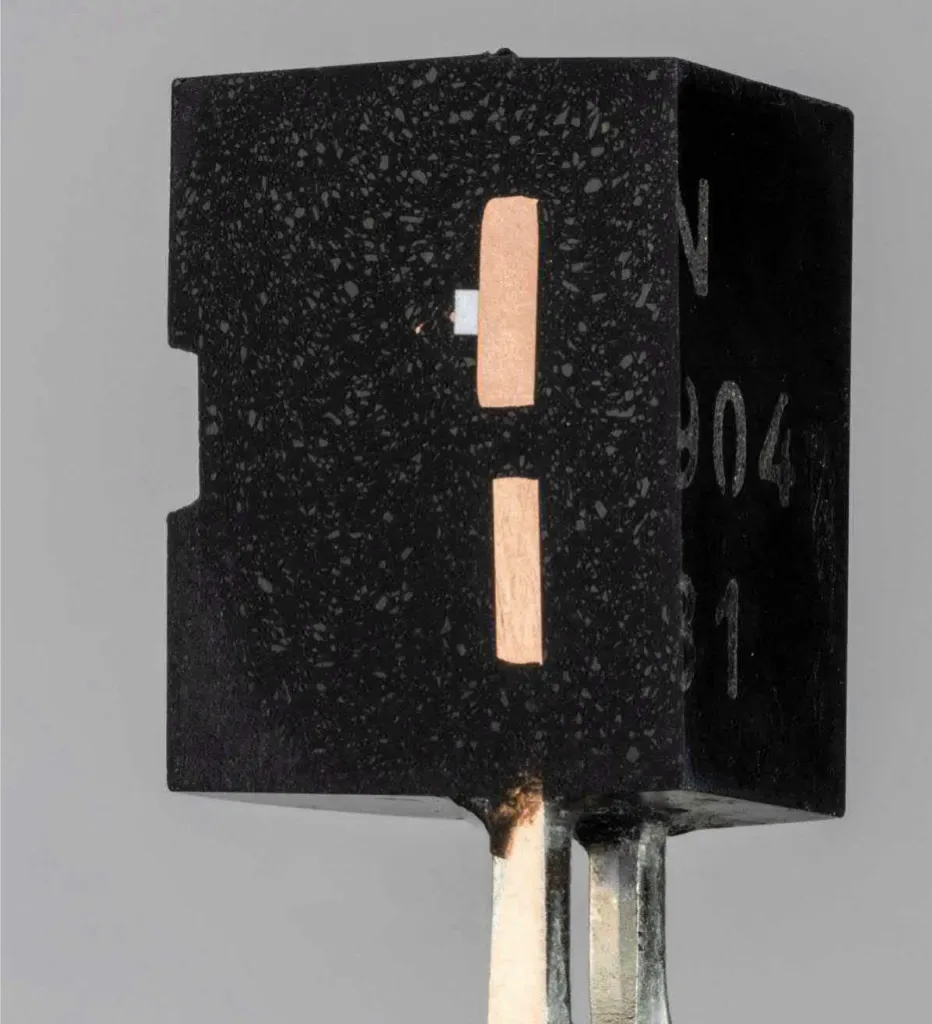
TO-92 package
9. Crystal Oscillator
The “ticking heartbeat” of many digital devices comes from an oscillator module like this one. Inside it, we find a paper-thin disk of sawn-off quartz crystal suspended on springs.
When voltage is applied to the electrodes, it stimulates the quartz to move, turning it into a tiny, electrically driven pendulum that vibrates at a steady frequency.
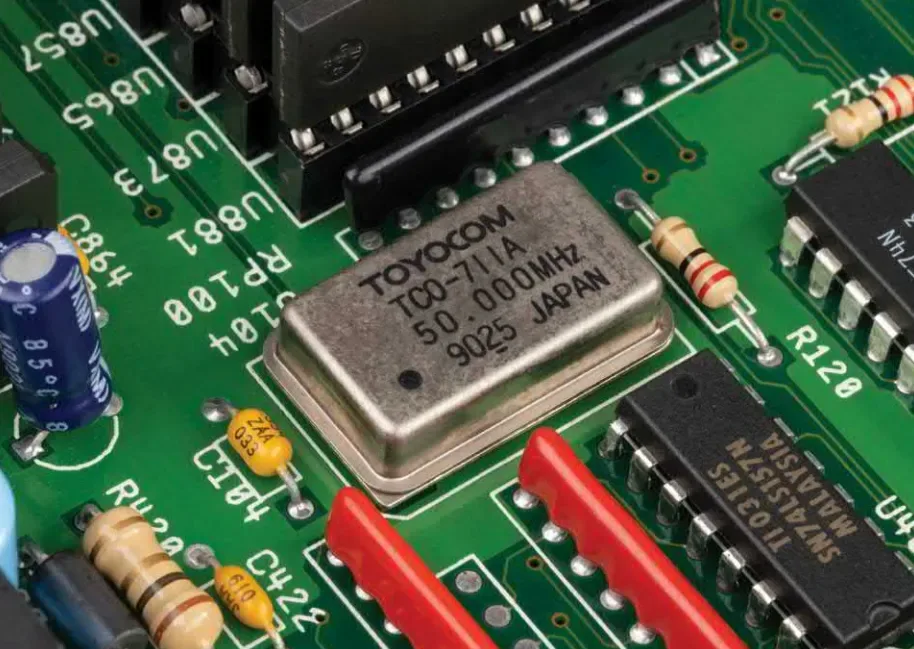
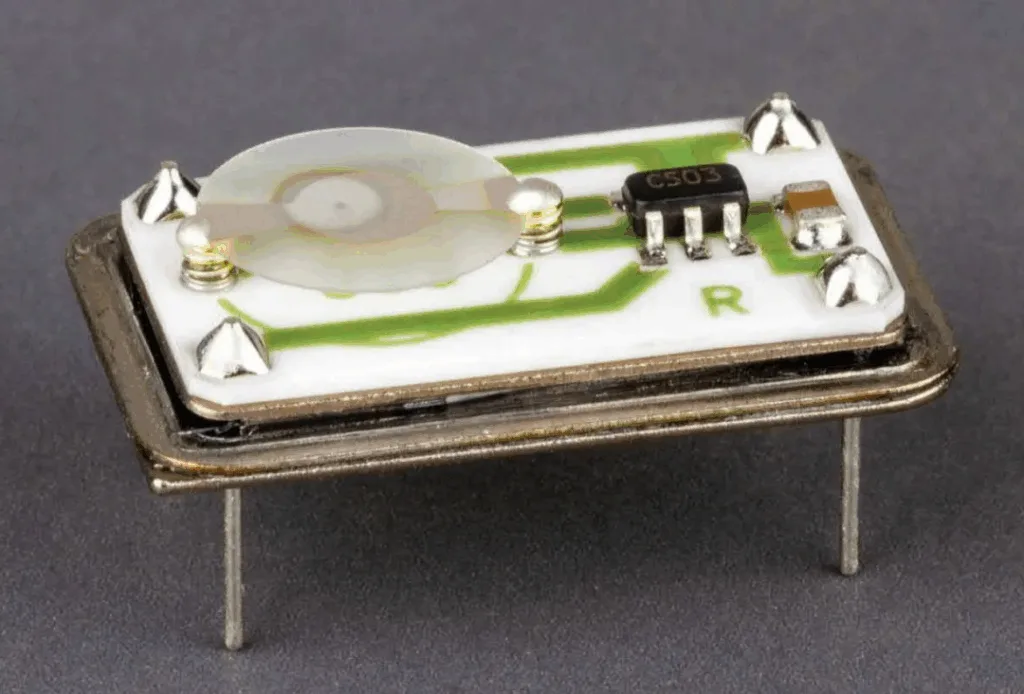
10. 3.5 mm headphone jack (Audio Jack)
Multiple layers of metal contacts wrap around the cylinder, revealing a delicate structure resembling concentric circles when cut across. Two tiny switches inside the 3.5mm jack disconnect any internal speakers when headphones are plugged into the device. Some computers use these switches to detect when a plug is inserted into the jack and bring up a software configuration menu.
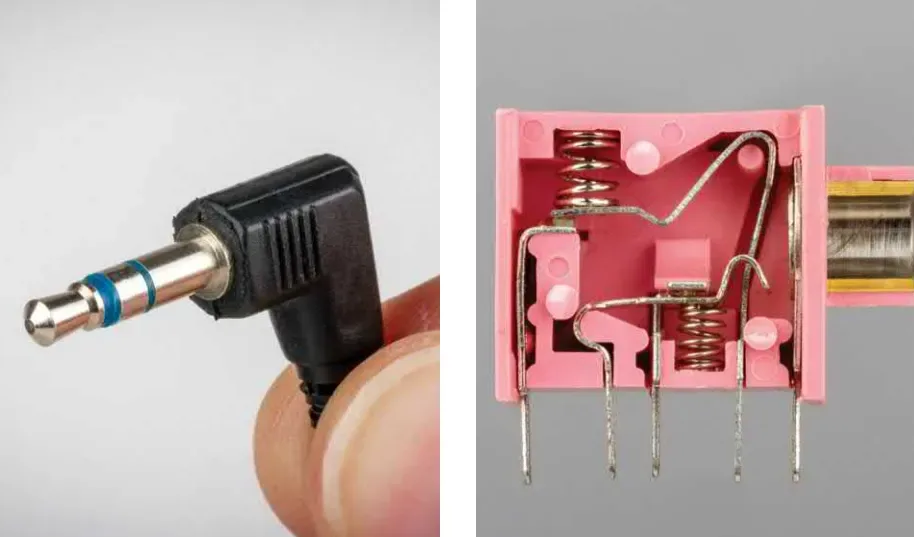
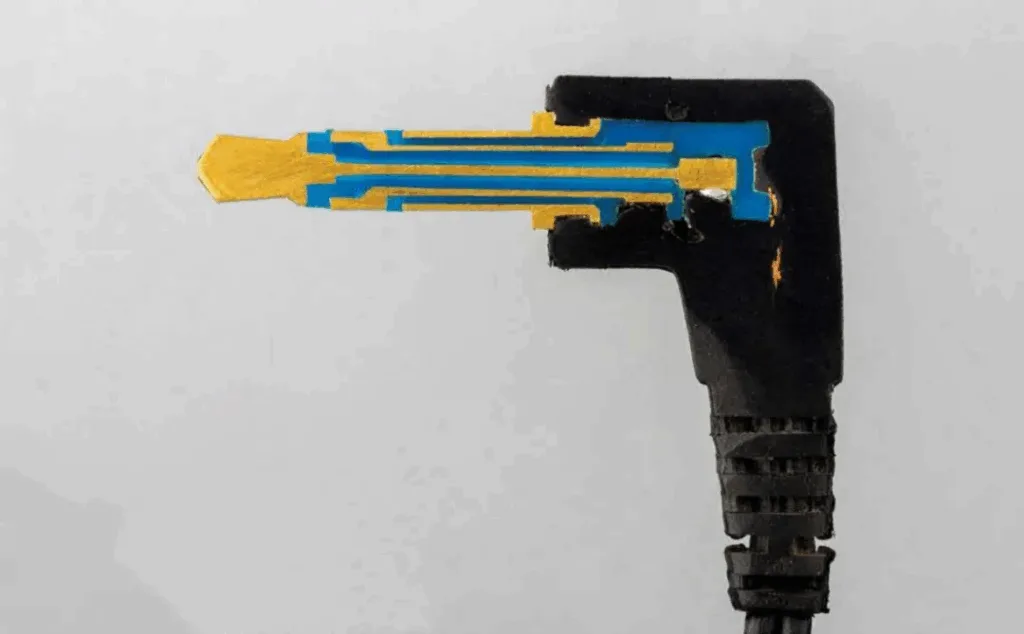

Summarize
“Open Circuits” is more than just a photography book; it’s a visual and engineering feast. It reaffirms our understanding that electronic components are not merely cold, functional parts, but rather precision crafts condensed from human ingenuity. In these cross-sectional photographs, we witness the beauty of symmetry, layering, and order. These components, once hidden within plastic and metal casings, are revealed through photography, creating a perfect fusion of art and technology.





